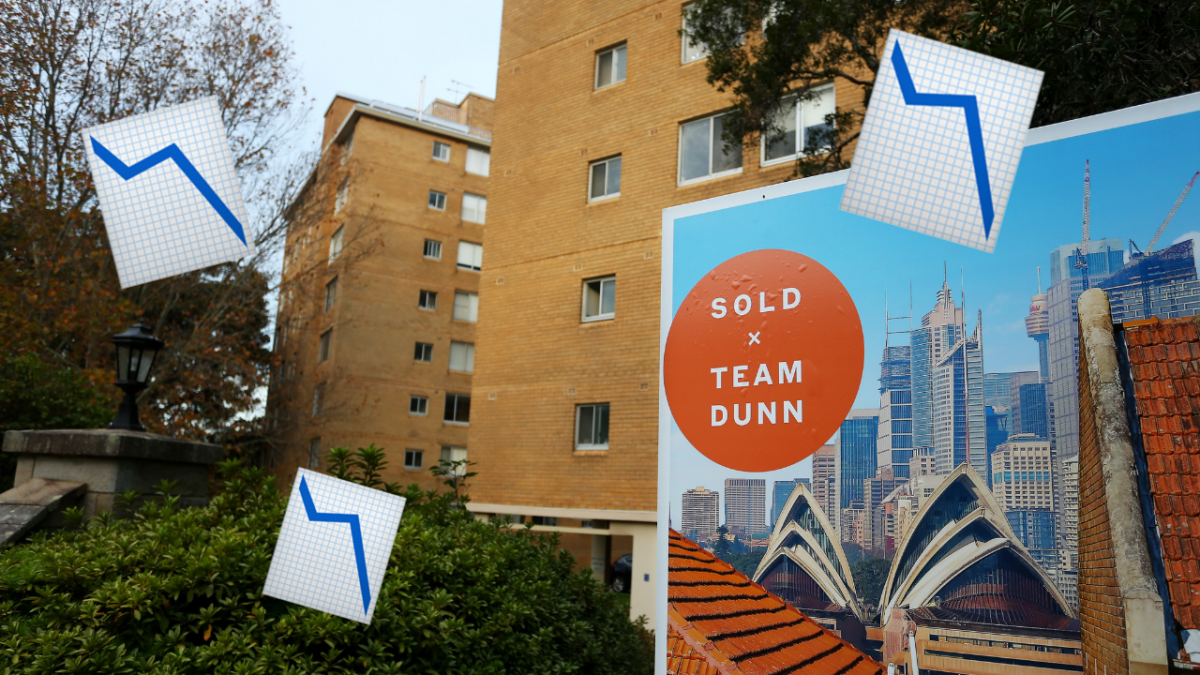
Can you fucking believe it? It’s Stranger Than Fiction at this point but housing prices in both Melbourne and Sydney actually dropped last month.
It was the second month in a row for Sydney after the city had its first drop in 17 months in February.
Yes, nationwide home prices might have risen an average of 0.7 per cent but they fell by 0.2 per cent in Sydney and 0.1 per cent in Melbourne. I will gladly accept these crumbs, thank you master.
Look, it’s not a lot. Houses are still more expensive and unaffordable than ever and the drop also needs to be considered within the context of just how much they’ve risen since the pandemic started.
In 2021 housing prices across the country went up 25 per-fucking-cent.
Sydney took the gold with an annual increase of 33.1 per cent, so a drop of 0.2 per cent makes about 0.0 per cent difference to young people looking to buy their first homes.
But (thank God there’s a ‘but’) economists have said this drop could mean a light at the end of the tunnel for housing affordability.
AMP Capital chief economist Shane Oliver told PEDESTRIAN.TV this teeny tiny drop was the start of a trough and predicted after this peak. It could signify a shift in affordability longterm.
“The housing boom of the last couple of years is over,” he said.
“Prices have only come back fractionally, but that said we’re in the early days of a longer downturn.”
Oliver explained that housing prices always ebb and flow based on interest rates, inflation and supply and demand — but this time could be a little different.
Let’s break it down.
The first reason for the uptick in 2020 and 2021 was record low interest rates.
When the Reserve Bank of Australia moved the interest rate to 0.1 per cent in 2020, people rushed to take out mortgages and were able to take out bigger loans than before.
With mortgage interest rates around 2 to 3 per cent, people could afford larger repayments and therefore could spend more on a house — compared to say in 1989 when the interest rates were around 17 per cent and people were therefore borrowing smaller sums so housing prices had to adjust.
The second reason for inflated housing prices is demand outstripping supply.
As we’ve seen with the cost of petrol, food and other essential goods all impacted by the pandemic, the war in Ukraine and the floods, when there isn’t enough supply to go around, prices go up.
The supply of affordable housing in Melbourne and Sydney is extremely skinny and demand has been high for years.
But then when housing prices boom we see an increase in property listing because sellers want to take advantage of that and get more money at an auction.
Eventually supply increases, demand drops and prices chill out a little. But it usually doesn’t last long because everyone starts looking to buy in a slump and the scales are tipped again and prices usually explode on the other side.
It’s a vicious cycle that’s been getting worse and worse.
“Affordability in Australia has been deteriorating since the mid-90s so it’s been a longer term problem,” Oliver said.
“We have the low interest rates now that have enabled people to pay high prices but we haven’t had enough supply to offset that demand, and we’ve been in that loop for 25 years.
“The politicians don’t want to do anything because two-thirds of the voters already have a house or are paying it off and they don’t want it to go down much [while] everybody else is trying to get in.”
Oliver said usually when prices come down the focus on affordability fades too and then prices quickly soar again. But this time interest rates basically couldn’t be lower so it can’t really get any worse.
He also said it’s gotten so bad the people are pushing harder for change — which just might work.
“The outcry about poor affordability is getting louder and if that combines with a less favourable economic environment for house prices, where interest rates are not going ever lower and lower and people pay more and more, then that should lead to more affordable property over the next five to 10 years.”
Oliver predicted housing prices would continue to drop into 2023 by 10 to 15 per cent in Melbourne and Sydney before they started to rise again in 2024.
Again, this is down from a 30 per cent increase in the last 12 months, so none of this is to say it’s not still fucked out there.
“A 10 per cent fall does help but it’s probably not enough,” he said.
“[But] I will say there is a bit more light at the end of the tunnel than there has been for the last few years.”
Oliver hopes the recent push for better affordability will mean that when prices do rise again they won’t explode and they’ll be better proportioned alongside wages and inflation.
But it’s best not to get too excited just yet. Everyone please just cross your fingers and pray.



